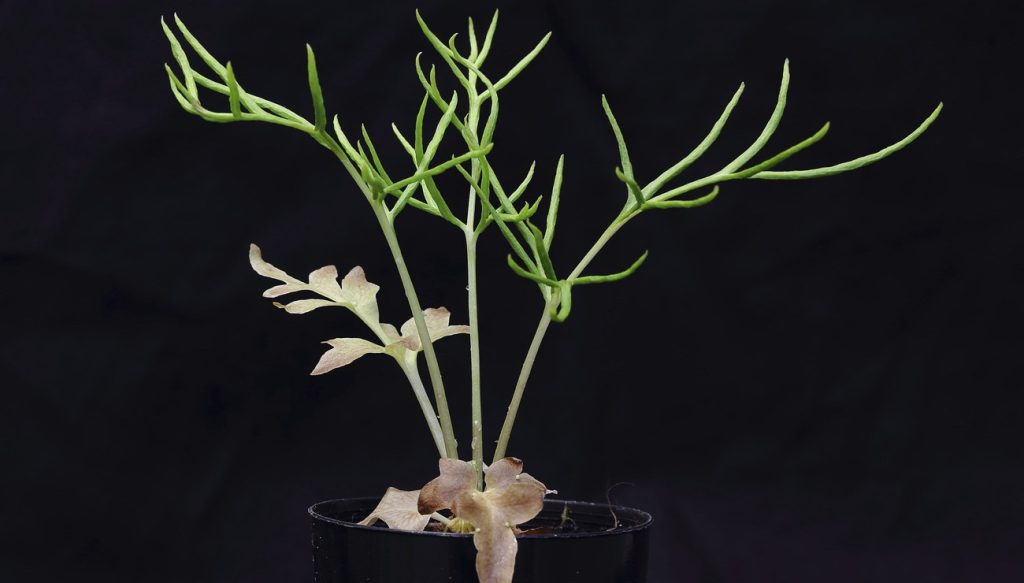
Genetic obesity and theft mania in ferns
It took eight years for about fifty researchers from 28 institutions to complete genome sequencing Ceratopteris Ricciardi (Richard Fern) and compiled, ie, tabulated raw sequence data. Native to aquatic environments in the tropics and subtropics, this plant is also a typical plant genetics species, easy to grow in the laboratory with a short life cycle of about six weeks. It is even one of the rare plants that grew in space, during the US space shuttle mission. Colombia in 1999. Genetically speaking, ferns are known to have large amounts of DNA and a large number of chromosomes (Ophioglossum reticulatum It holds the known record of 1440 chromosomes). The result: genome sequencing, assembly, and interpretation are particularly complex. Hence the importance of the work done by Blaine Marchant at Stanford University in the United States and many of his colleagues. By matching this fern’s genome assembly, they have partially lifted the veil on its evolutionary history – why it contains so many genes and how it integrates defense genes from bacteria – and began identifying compounds of interest such as flavonoids, essential for food, medicine or even biocides.
Like most of the present fern, herbaceous or tree, Ceratopteris Ricciardi It was part of the Mesozoic landscapes (between 251 and 65.5 million years ago) and may have been on the list of herbivorous dinosaurs. Researchers have been debating the mechanisms of fern genome evolution for decades. One hypothesis that justifies its size (we’re talking about a fat genome!) is the accumulation of multiples of entire genomes, a co-evolutionary process in plants, a source of hybridization and new species. We now know that this is not the case with Richard’s fern, in particular because it contains only about 37,000 genes, like other plants. So it does not have genes in multiple copies, and the explanation comes from elsewhere. Thanks to powerful current sequencing tools and bioinformatics methods, Blaine Marchant and colleagues describe the precise assembly of the genome: 7.46 billion base pairs (compared to 3 for humans) distributed over 39 chromosomes, with functional genes included in the repetitive DNA sequences representing approximately 85% of the total.
Long repeating sequences are the so-called transposable elements, that is, DNA sequences that are able to repeat themselves and move independently in the genome. During the transduction mechanism, which consists of cutting and then repairing the DNA chain, there can be simple translocation or replication, with two copies of the transposable element at the end. There are many transposable elements in the genome of eukaryotes (whose cells contain a nucleus); In humans, they represent 45% of the genome. In the case of Richard’s ferns, these are inverse transposons, a specific class of transposable elements, with a specific molecular mechanism for duplication. “They are generally silent, but they are sometimes able to reproduce, in this case, in very large numbers,” defines Olivier Panaud, Director of the Plant Genome and Development Laboratory (CNRS/University of Perpignan Joint Research Unit), who specializes in the topic. The study authors therefore assert that this genome is fat due to the explosion of reverse transposons, without explaining it.
Even more surprising, the researchers highlighted the plant’s genome, defense genes, which encode proteins such as aerolysin, a toxin capable of destroying cells by puncturing them, or even Tma 12, an insecticide. Where do these genes come from? Blaine Marchant and colleagues have shown, for the first time, that bacterial gene homologs have been transferred to the plant (we are talking about horizontal gene transfers). And they lodged firmly there: chromosome 9 contains at least 36 contiguous aerosol genes, a sign of significant duplication, or amplification, which likely enhances the potency of the venom. This phenomenon has occurred several times, because such gene combinations are located on at least three chromosomes.
“These findings are very well supported,” notes Olivier Panaud. This is the first time I have seen this combination of horizontal gene transfer and amplification. Horizontal gene transfer and amplification may have benefited from the hyperactivity of genome duplication, which may sometimes have genes ‘integrated’ into the process. “This may be the key to adapting these ferns,” the researcher insists. Thus horizontal transfer has been a source of biological innovation, with bacterial genes being imported into the fern genome.

“Organizer. Social media geek. General communicator. Bacon scholar. Proud pop culture trailblazer.”

